Cardboard displays are more than just functional—they’re a powerful tool for creating eye-catching, memorable retail campaigns. When used strategically, these displays can increase product visibility, boost sales, and even enhance the customer experience. Many well-known brands have successfully used cardboard displays to create unique campaigns that leave a lasting impact.
In this blog, we’ll explore six successful retail campaigns that leveraged the power of cardboard displays to achieve impressive results.
1. Coca-Cola’s Holiday-Themed Cardboard Displays
Coca-Cola is known for its creative and festive holiday campaigns, and its use of cardboard displays during the Christmas season is no exception. For several years, the company has designed large, seasonally-themed cardboard displays featuring the iconic red-and-white branding.
These displays are placed at eye level, often in high-traffic areas like grocery store entrances or checkout counters. Featuring colorful graphics and promoting limited-time holiday bottles, Coca-Cola’s cardboard displays stand out in the retail space and encourage customers to purchase more during the festive season. As a result, the company has seen a significant increase in seasonal sales, with the displays helping to create a holiday shopping experience that connects emotionally with customers.
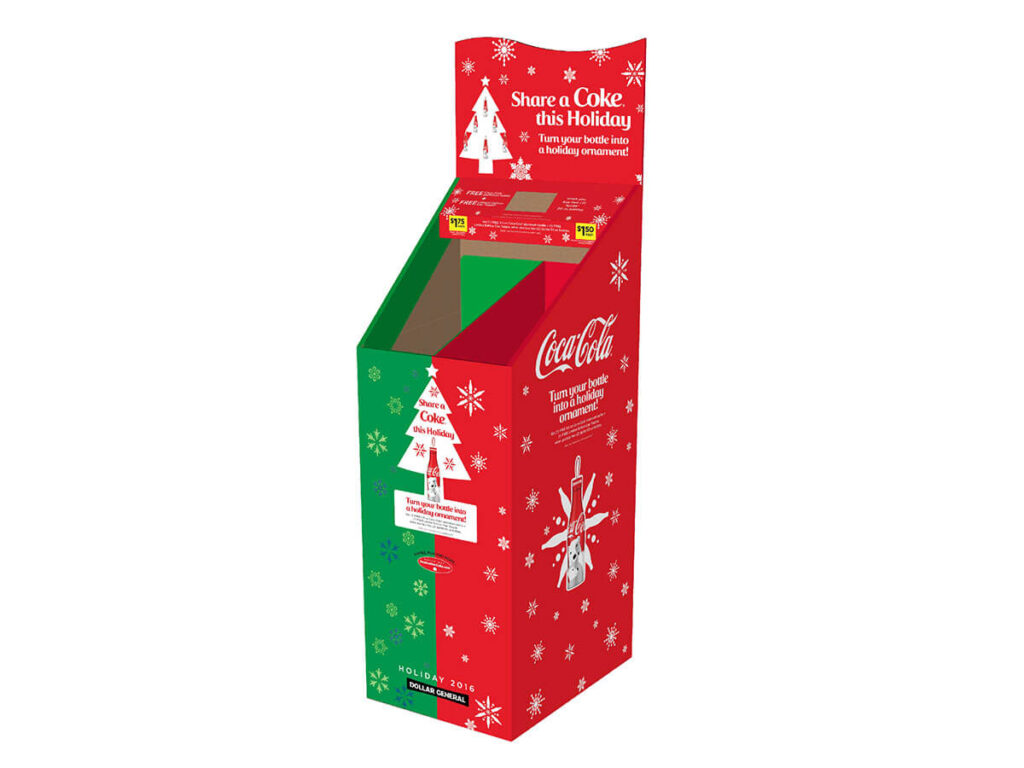
2. Kinder’s Product Launch Displays
When Kinder launched a new product, their use of cardboard displays took center stage in retail locations, highlighting the fun and child-friendly nature of their brand. For example, with the launch of their Kinder Joy egg, stores featured cardboard displays that emphasized the excitement of the toy-surprise concept, with vibrant colors and large graphics of the product.
The displays were interactive, engaging children and parents alike. By utilizing cardboard displays designed with fun and playful visuals, Kinder created an in-store experience that encouraged product exploration. The creative use of cardboard helped drive foot traffic and sales in stores as parents and kids were drawn to the fun, interactive designs.
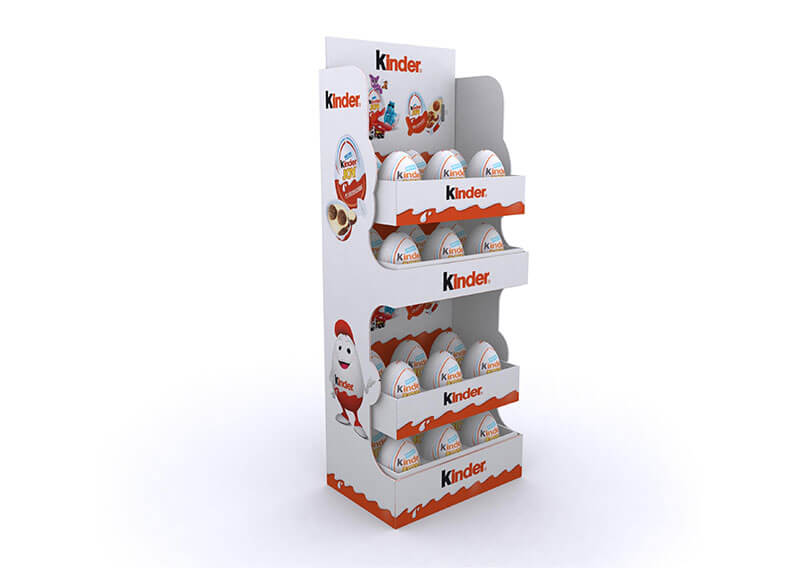
3. LEGO’s Interactive Cardboard Display
LEGO has used interactive cardboard displays to great effect in both retail and pop-up installations. For example, for the launch of their “LEGO Ideas” set, which included some of the most requested fan-designed sets, the company created a massive interactive cardboard display in stores that encouraged customers to build their own mini-versions of the product.
The display included several components made from cardboard, such as a backdrop featuring famous LEGO scenes and a building area where shoppers could assemble LEGO models. The hands-on approach made the display engaging, driving both customer participation and sales. The campaign was a huge success, and it helped foster a stronger emotional connection between the brand and consumers.
4. Kellogg’s Limited-Edition Cardboard Displays for Cereal Promotions
Kellogg’s, a household name in breakfast cereals, is no stranger to using cardboard displays to boost their retail presence. For a recent campaign promoting their limited-edition cereal flavors, Kellogg’s designed eye-catching cardboard displays that highlighted the unique packaging and vibrant graphics.
These displays were placed prominently at the front of the store, drawing customers in with their bright, attention-grabbing visuals. Featuring fun facts, special offers, and large images of the new flavors, the displays created excitement and curiosity among customers. The campaign was successful in driving impulse buys, with sales of Kellogg’s cereals spiking during the promotion period.
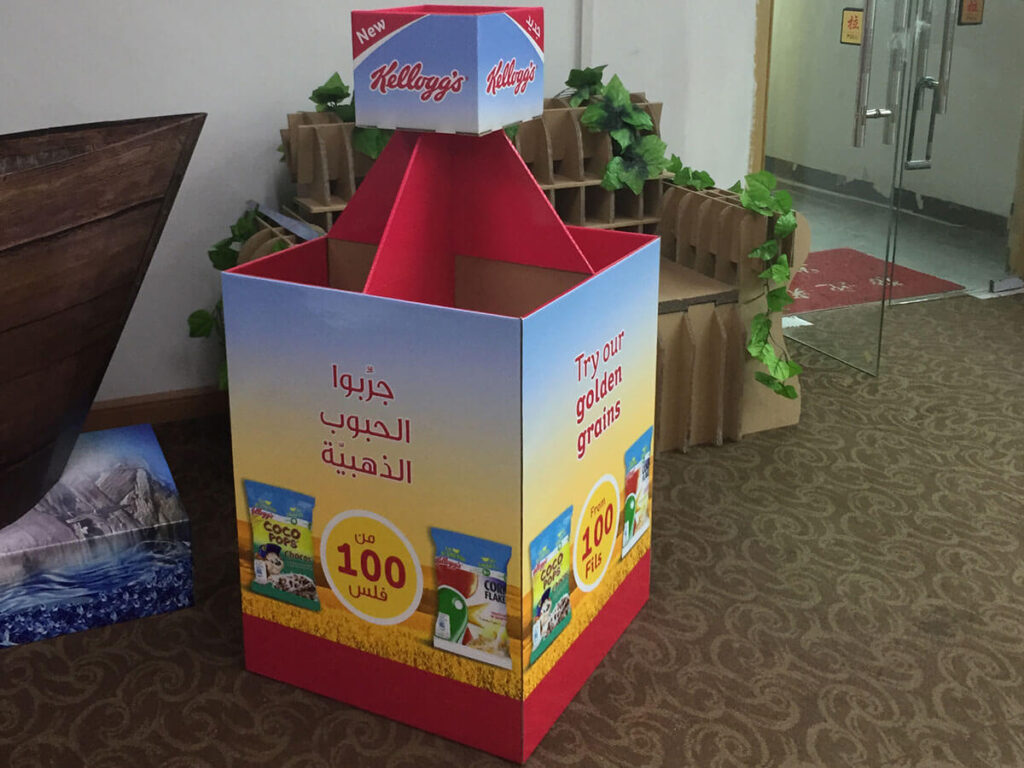
5. Dr Pepper’s “Flavor Explosion” Campaign
Dr Pepper’s “Flavor Explosion” campaign featured a variety of limited-edition flavors and showcased them through cardboard displays in stores. The campaign aimed to drive interest and create buzz around the new flavors. The displays were designed with bold colors and fun, vibrant graphics, highlighting each unique Dr Pepper flavor.
The cardboard displays were strategically placed in high-traffic areas such as supermarket aisles and near checkout counters. They featured large cutouts and 3D elements to grab attention and drive impulse buys. Customers were intrigued by the new flavors and excited by the fun and interactive design of the displays. The campaign proved successful, with sales seeing a significant increase, as consumers flocked to try the limited-edition drinks. Or you can go locally to Display2Go for urgent order.
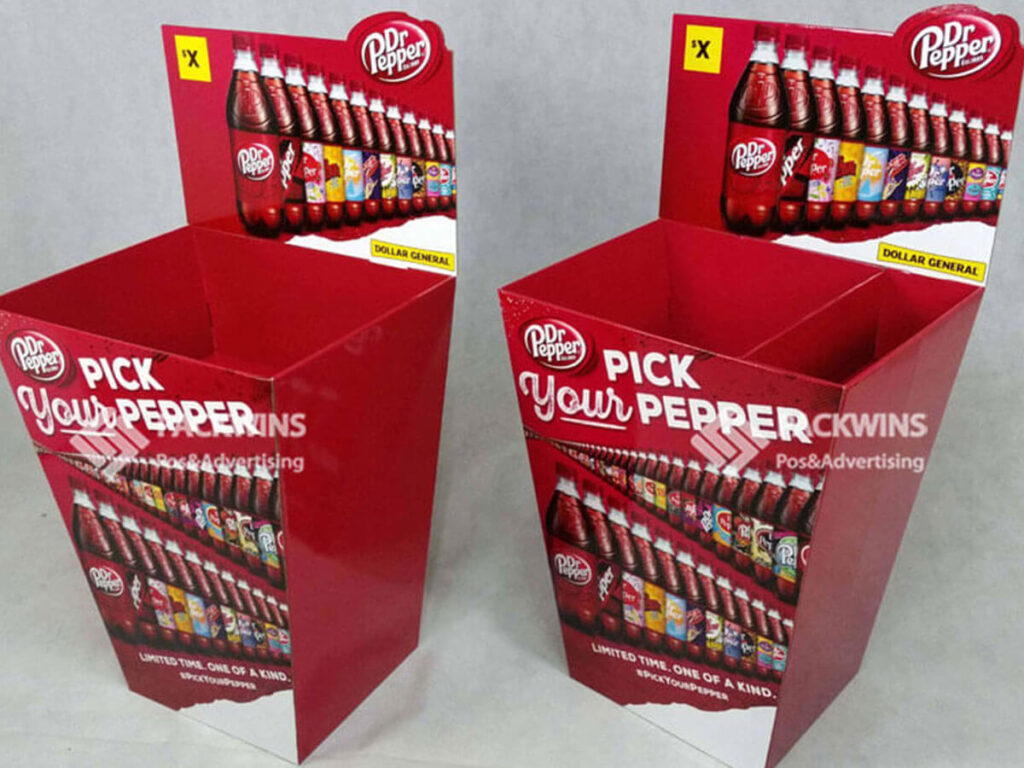
6. Disney’s Themed Cardboard Displays for Movie Promotions (continued)
Disney’s use of cardboard displays extends beyond just movie merchandise. The company has also used cardboard displays in grocery stores, shopping malls, and theme parks to promote products tied to blockbuster films or seasonal events. For instance, in promoting the Star Wars franchise, Disney created cardboard displays that captured the dynamic action of the movies, using life-size cutouts of characters like Darth Vader, Yoda, and Chewbacca.
These themed displays were not only a way to showcase products like action figures, apparel, and accessories, but also to create an immersive experience for customers. The engaging designs encouraged children and adults alike to interact with the products, which boosted both interest and sales. Disney’s strategy with cardboard displays is a prime example of how retail environments can be transformed into experiential spaces that enhance brand storytelling.
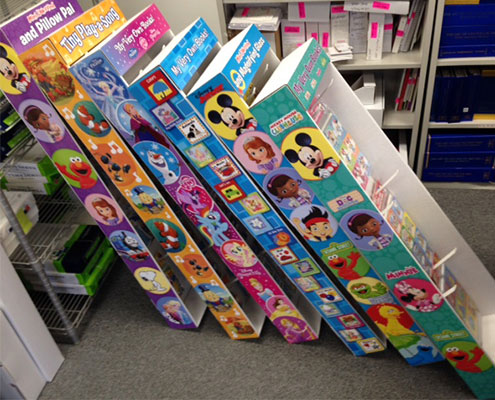
Key Takeaways from These Campaigns
These six successful retail campaigns demonstrate how cardboard displays can be used to create impactful, engaging experiences for customers. Here are a few key takeaways:
- Seasonal Themes: Using seasonal graphics or promotions on displays can create a sense of urgency and encourage purchases.
- Interactivity: Interactive elements on displays increase customer engagement and can lead to higher sales.
- Bold Design: Simple, bold designs with clear messaging are effective in attracting attention in retail spaces.
- Branding Consistency: Ensuring that displays align with the overall brand identity strengthens the connection with customers.
Cardboard displays offer incredible versatility and can be designed to support various campaign goals. Whether it’s for a product launch, seasonal promotion, or interactive experience, well-designed cardboard displays can play a central role in retail success.
Conclusion
From Coca-Cola’s festive campaigns to Nike’s bold product displays, these six retail campaigns highlight the potential of cardboard displays to boost sales, engage customers, and strengthen brand presence. By tapping into the power of creative design and strategic placement, retailers can leverage cardboard displays to drive results and create memorable in-store experiences.
If you’re looking to boost your next retail campaign, consider the benefits of using cardboard displays. They’re eco-friendly, customizable, and incredibly effective when executed well.



